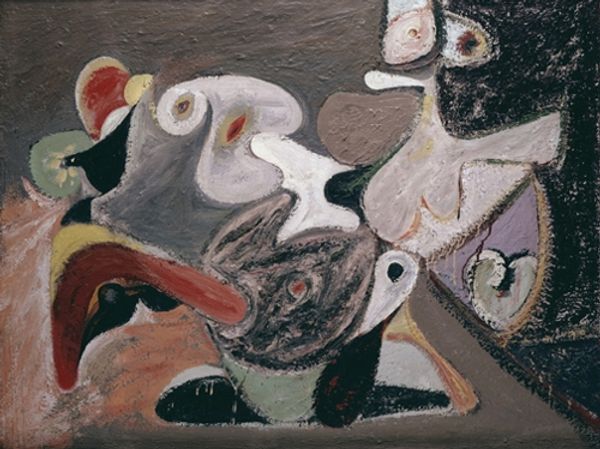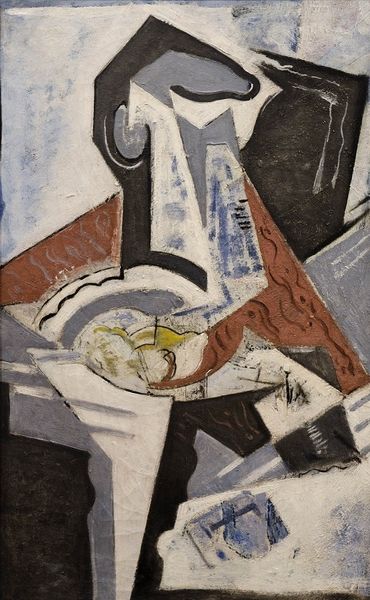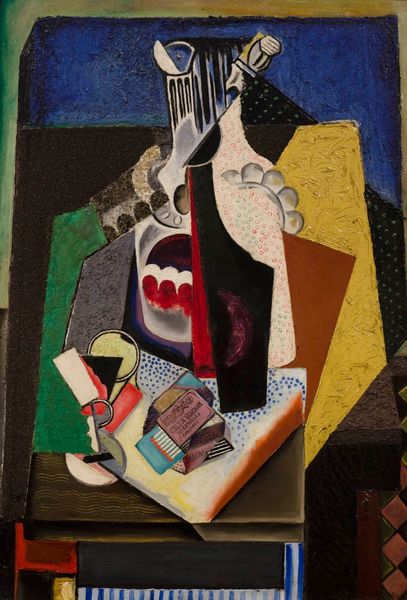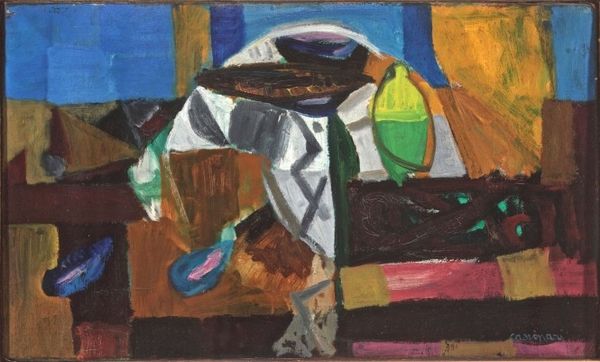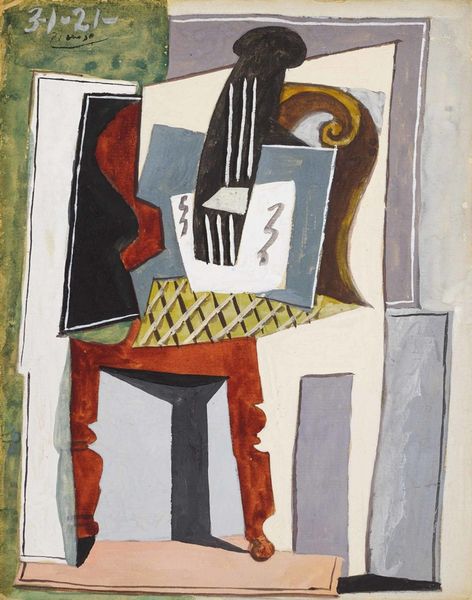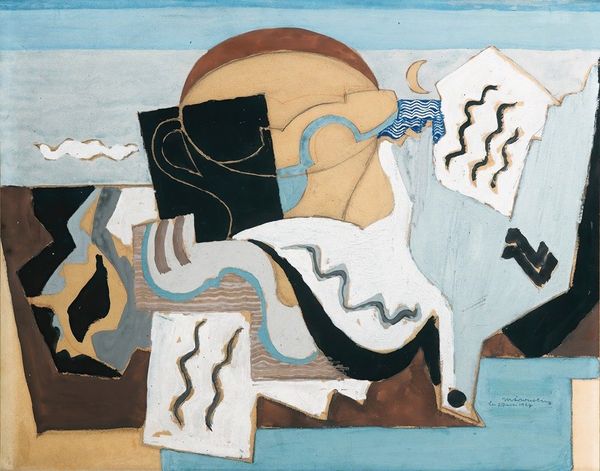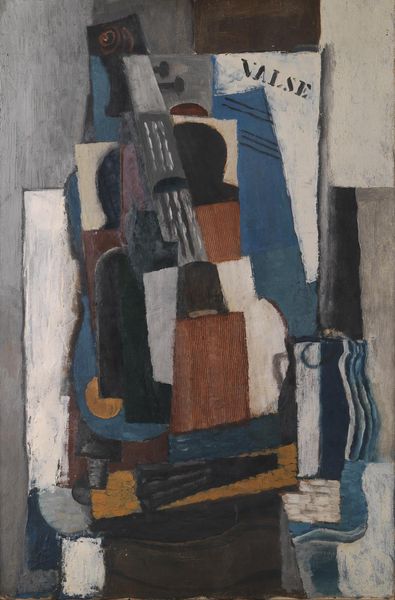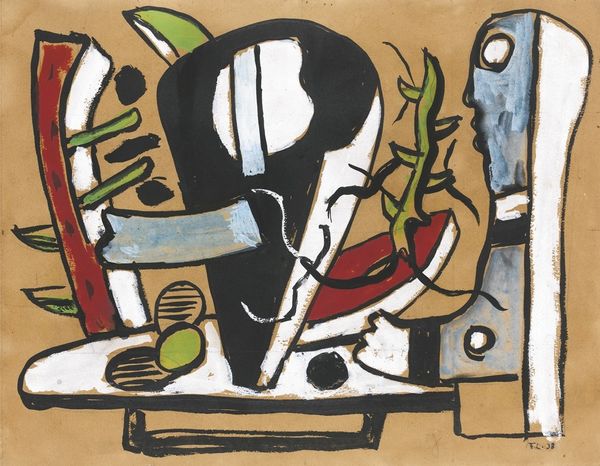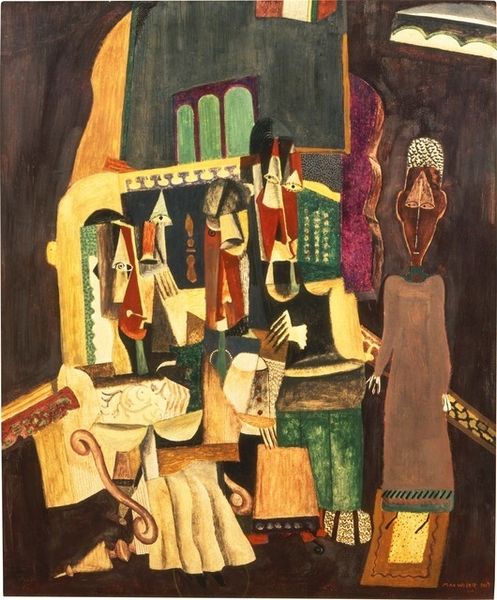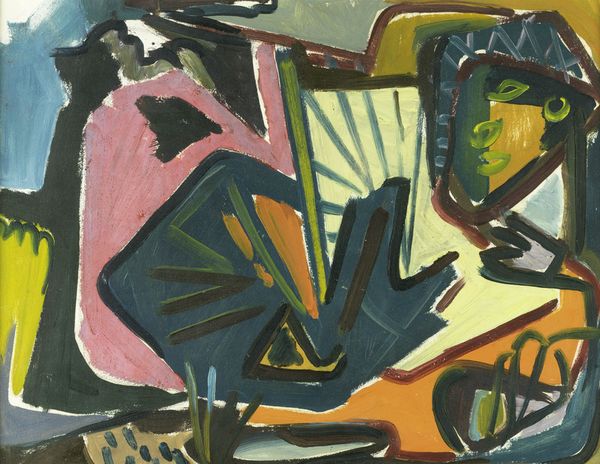
painting, oil-paint
#
cubism
#
painting
#
oil-paint
#
oil painting
#
geometric
#
modernism
Copyright: Public domain US
Curator: Welcome. Here we have Pablo Picasso's "The Tavern", painted in 1914. It's an oil on canvas work and a prime example of his Cubist explorations during that period. Editor: Right. My initial vibe? Cozy chaos! I feel like I'm looking at a dismantled feast after a really good night. There's something almost comforting about the deconstructed scene. Curator: Comforting is an interesting word. It's true, although fractured, the piece presents elements of daily life; fragments of newspaper, tableware and maybe, judging by the "Beau Week Tris..." inscription on what could be a menu board, a snapshot of bistro culture. Editor: Yes! Like Picasso took a memory and then shattered it and put it back together, but just...differently. You can almost smell the stale beer and cigarettes! The overlapping geometric shapes create a tangible feeling of being there, in the midst of the convivial buzz. Curator: Precisely! And it's vital to remember the political context. Picasso painted this just before the outbreak of World War I. Many see Cubism as reflecting that pre-war fracturing of European society. It challenges our accepted views of stability and order. Editor: Totally. And perhaps that's why, for me, the deconstruction has that comfort— it acknowledges that things fall apart. Look at that lone fork amidst all the geometric madness – its solitary stance adds to this sensation. Almost as if daring to impose some sense of order upon its surroundings, failing though the artist may make it. There's a real pathos to it. Curator: I agree that the loneliness comes across and indeed the flattened perspective and overlapping planes challenge conventional representation but I feel they still tell their story clearly. Editor: Yes, this piece manages to contain both intimacy and universality within one beautiful fractured oval. You could spend a lifetime just diving into its little stories, right? Curator: Absolutely, the social and political reverberations encapsulated in "The Tavern" speak volumes, as ever offering valuable perspectives of that historical crossroads through visual artistry. Editor: Yes and it makes you ponder—does true insight come only from putting the pieces back together or truly come from just taking the journey to embrace their disarray.
Comments
No comments
Be the first to comment and join the conversation on the ultimate creative platform.

